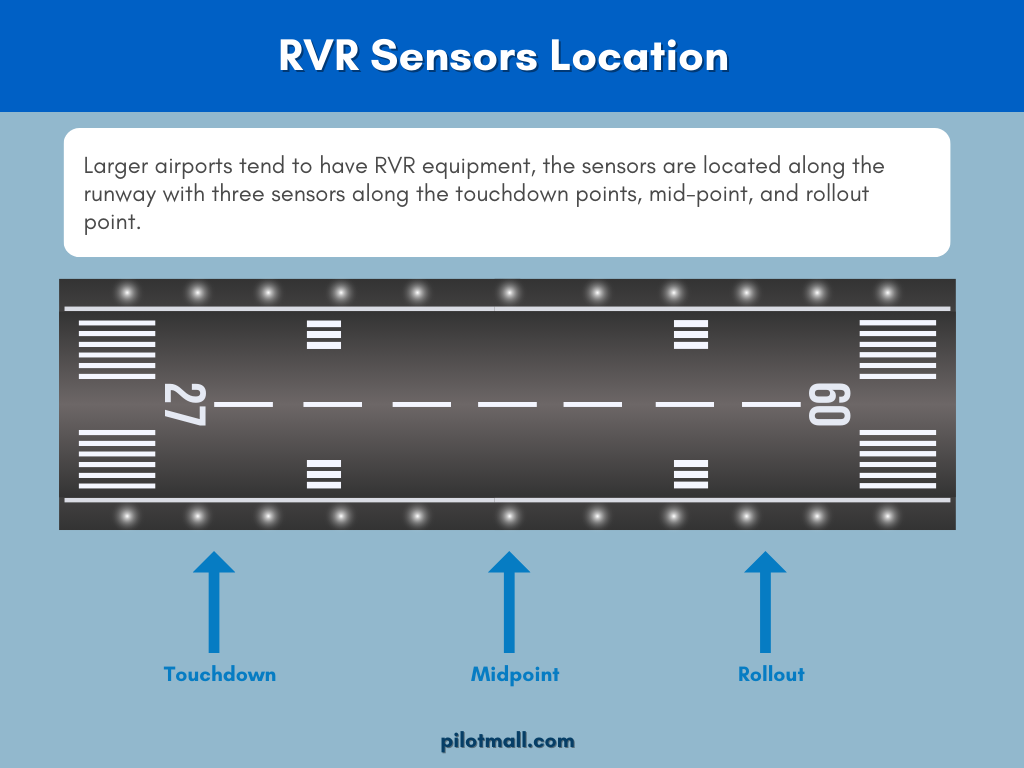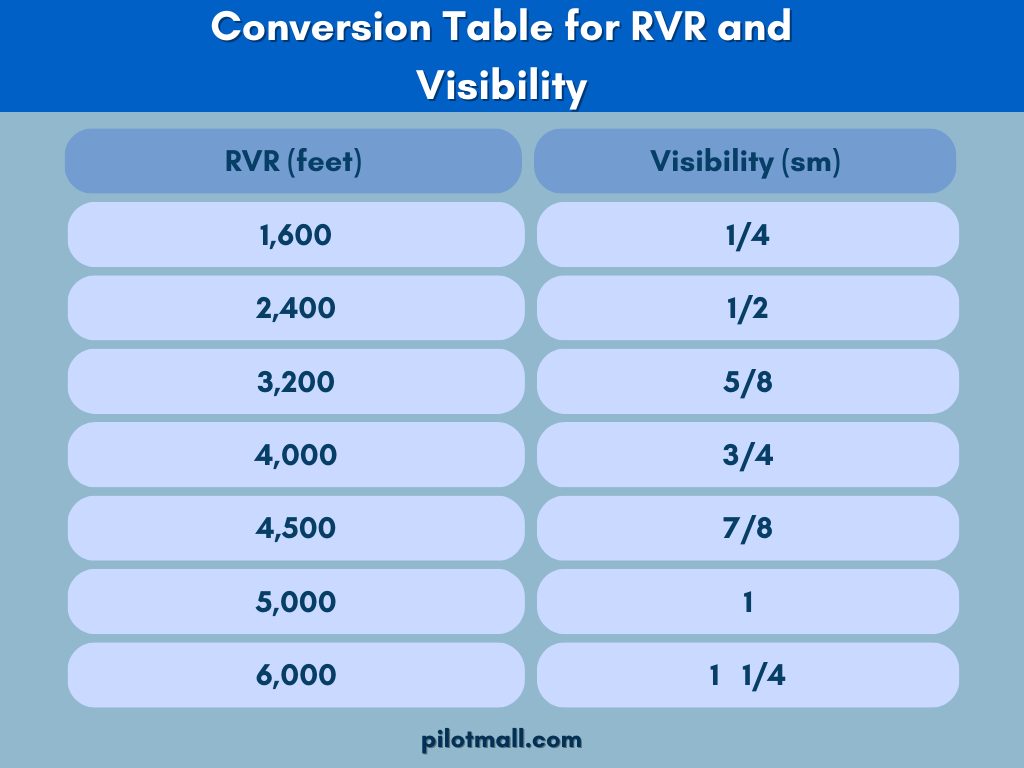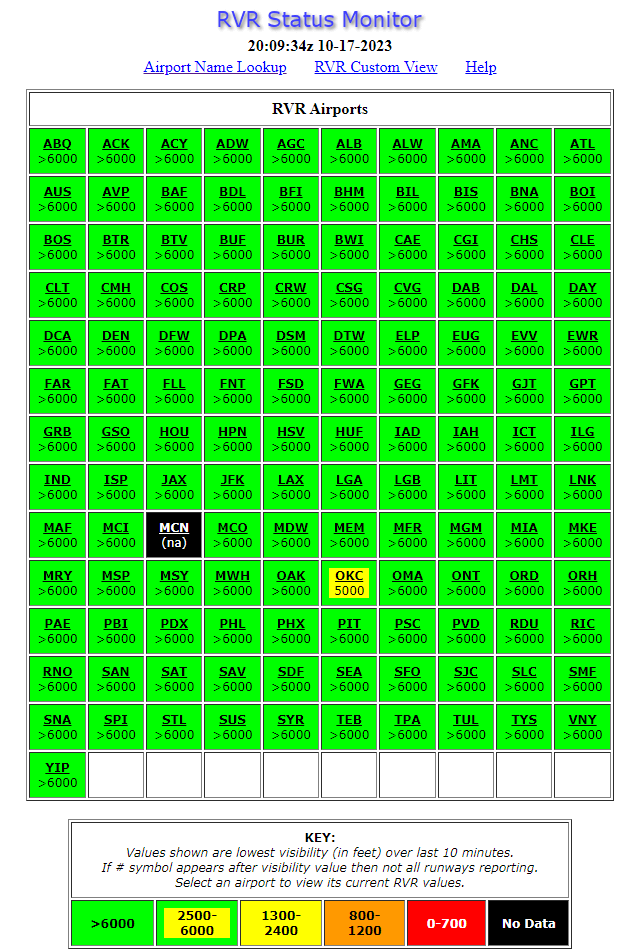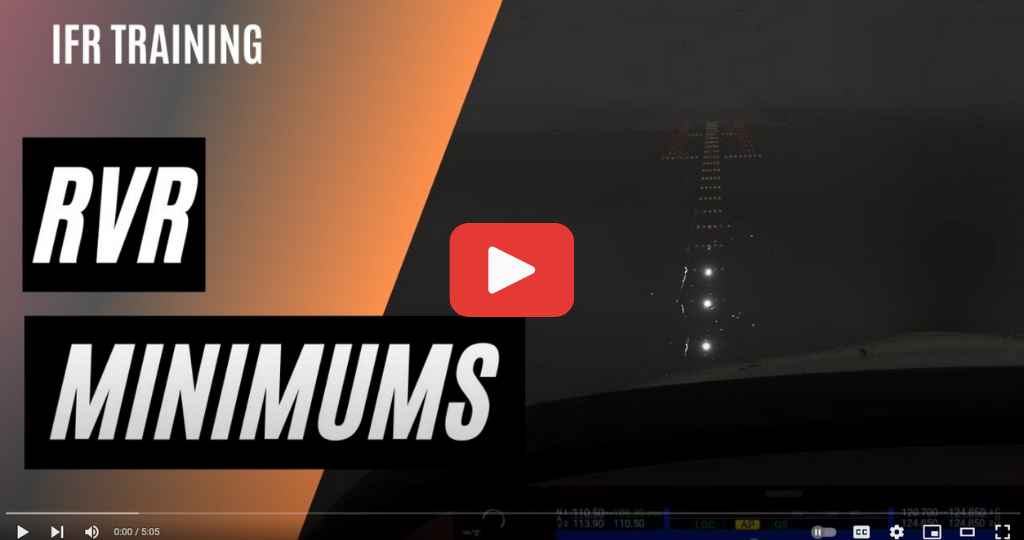Runway Visual Range (RVR in METAR): What it is, How it Works
If you've ever studied how to read METARs, then you may have noticed an "R" symbol followed by a runway number. That's an RVR and only appears in a METAR when visibility is low. What does this tell us as pilots, why is it important?
In this article, we will discuss what RVR information means for pilots and why it is essential to comprehend them.
Let's get to it!

Featured Pilot Gear
Browse our selection of high-quality pilot supplies! Your purchase directly supports our small business and helps us continue sharing valuable aviation content.
If you’ve ever studied how to read METARs, you may have noticed an “R” followed by a runway number. That’s RVR, and it typically appears when visibility is low. What does it tell us as pilots, and why does it matter?
In this article, we’ll explain what RVR means, where to find it, and how to use it for safer go/no-go and approach decisions.
Let’s get to it!
What is RVR?

Runway Visual Range (RVR) is the distance a pilot can see down the runway from the cockpit when aligned on the centerline for takeoff or landing. RVR systems give pilots and controllers runway-specific visibility information during conditions like fog, snow, heavy rain, blowing sand, or other precipitation.
In short, the RVR report helps determine whether it’s appropriate to take off or land during limited visibility.
Where to Find Runway Visual Range Meters
In the United States, RVR is typically reported in feet and is only available at airports with runways equipped with RVR sensors. If a METAR only reports visibility in statute miles, the runway likely does not have RVR equipment available.

On the Runway
Larger airports are more likely to have RVR equipment. A runway with RVR commonly uses sensors positioned near:
- Touchdown zone
- Midpoint
- Rollout
RVR can be reported for up to four runways at an airport and reflects what can be seen on that runway environment, including runway edge and centerline lighting such as High Intensity Runway Lights (HIRL).

How is RVR Reported on a METAR?
RVR appears in a METAR starting with the letter R, followed by the runway number, then a slash and a four-digit value (in feet). Prevailing visibility is usually listed separately in statute miles (and fractions).
Example: R24/1000FT means the runway visual range on runway 24 is 1,000 feet.
Pilots can also request RVR from ATC while on approach.

On an Approach Plate
Approach plates often show visibility minimums that may be expressed as RVR values. Pilots must have the required runway environment in sight before descending below Decision Altitude (DA) or Minimum Descent Altitude (MDA), as applicable.
RVR Values

RVR is commonly reported starting at 100 feet and increases in increments of 100 feet up to 1,000 feet. After that, values are typically reported in larger increments (often 200 feet up to 3,000, then 500-foot increments up to a common maximum of 6,000 feet).
Runway Visual Range vs. Visibility
RVR and visibility both relate to how “seeable” conditions are, but they’re not the same thing.
Visibility is a general measure of the farthest distance an object can be seen (often for the airport area). RVR is runway-specific and is designed to reflect what a pilot can see down a particular runway from the cockpit position aligned with the centerline.
Types of Visibility
Being able to distinguish different types of visibility is important for flight planning and decision-making. The three commonly discussed types are:
- Runway Visual Range (RVR)
- Ground visibility
- Flight visibility
Why RVR is Important

RVR is especially important for instrument approaches and takeoff planning. It’s a key factor in setting approach minima because the pilot must be able to see the runway environment before touchdown.
For IFR pilots, RVR can help you decide whether an approach is likely to work—or whether you should plan for an early missed approach and/or route to an alternate. For VFR pilots, it can help confirm whether conditions meet legal and practical visibility requirements.
We recommend checking out the FAA’s article on RVR.
Where to Find More RVR Information
The FAA provides an RVR status monitor site where you can search an airport to see whether it has RVR capability.
FlightInsight also posted a helpful video on RVR minimums and how they can apply during real-world instrument approaches.
Frequently Asked Questions

-
Why does RVR only show up in some METARs?
RVR is typically reported when visibility is reduced and when the airport/runway has RVR equipment installed and operational.
-
Is RVR the same as prevailing visibility?
No. Prevailing visibility is a general airport-area visibility report (often in statute miles). RVR is runway-specific and reflects what can be seen down a particular runway from the cockpit perspective.
-
What does “R24/1000FT” mean?
It means runway 24 has an RVR of 1,000 feet—the runway environment is visible for about 1,000 feet down the runway centerline.
-
Where can I find RVR minimums for an approach?
They’re listed near the approach minimums on the approach plate. Some procedures express visibility as RVR values (instead of statute miles).
-
Can ATC give me RVR while I’m inbound?
Yes. Controllers can provide current RVR values for equipped runways, and pilots often request it when conditions are near minimums.
Takeaway
In aviation, conditions can change quickly—especially when weather reduces visibility. Runway Visual Range (RVR) is a runway-specific tool that helps pilots and air traffic control make better decisions for safer arrivals and departures.
As you learn more about aviation weather, the goal is to make confident decisions with solid information—especially when the skies don’t cooperate.
Fly safe up there!
Want to Learn More About Airports and Approaches?
Check out these guides:
- What Are Your Standard Takeoff Minimums? (Part 91)
- How to Read Airport Signs (Everything You Need to Know)
- ILS Approach: Instrument Landing Systems Explained
- Circling Approach: How to Accomplish It and What Is It?
- Airport Runway Lights: Spacing and Colors (All the Details)
Did you find this article helpful?
Do you think we missed anything important? Let us know in the comments below!































